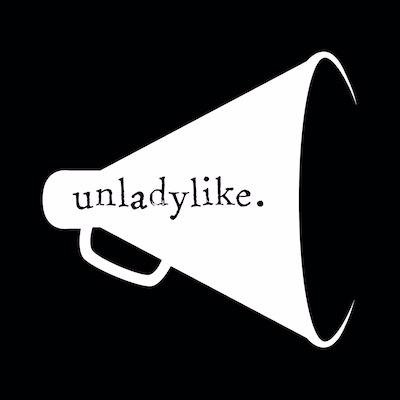So here's what I answered, many months ago, when asked the following questions:
What are the reading trends you are seeing with teenagers and YA fiction? Has supernatural romance run its course? Is it still strong? Are there any clues to what the next wave might be?
Supernatural has always been popular but the sparkle is definitely rubbing off a little. Dystopian is the current trend that has exploded off the back of series like Suzanne Collins’ The Hunger Games and Patrick Ness’ Chaos Walking. Neither supernatural, paranormal or dystopian are new to readers but their increasing relevance in pop culture is making a greater impact. All of these genres within YA have commonalities - romance, adventure, empowerment and often mix of all genres to make new breeds of story. Sci-fi has had a small resurgence, with a bent towards romance, and contemporary/realist YA is always present on the bestseller lists.
There is
growth in the New Adult category which can be seen as a part of YA but is more
fittingly aligned with commercial adult fiction. New Adult was coined by St Martin’s Press in
2009 for narratives that detail the time after high school and before working
life - YA collegiate in a sense.
However, its success can be attributed to the romance and erotica elements
of what is being written and a decidedly adult audience.
Middle Grade
is another area of growth as part of children’s fiction rather than YA. Serialised narratives like Diary of a Wimpy
Kid, Percy Jackson, Specky Magee, Billie B Brown and Alice Miranda have all
been very successful with stalwarts like Morris Gleitzman, Paul Jennings and
Andy Griffiths continuing to sell in droves. Quite often middle grade tends to
be lumped in with young adult but they are two very separate aspects of
children’s and young adult fiction.
Have you noticed drop/rise in interest in YA fiction, now
that it is in competition with eBooks, smartphones, blogs, tablets etc?The interest
in young adult is most definitely growing.
It wasn’t very long ago that the young adult titles were shelved alongside
picture books in bookstores. With the
emergence of Harry Potter in the 90s, YA took the ball and never stopped
running. The New York Times recently
reported that the number of YA titles available in 2012 was triple that of a
decade earlier. There is a ferocious
appetite for these stories and it is being met.
The
‘competition’ of other formats is diverting focus, however it is also the
means by which many YA readers are discussing books, engaging with authors and
developing their own creative pursuits.
Teen readers can connect with their favourite authors, and fellow
readers, on Tumblr, Twitter, Facebook or Instagram, building on their reading
experience. Technology is a means in
which to read and engage.
It must be
noted that teen readers only account for 16% of YA book sales. While there is a need for these stories, the
market is being driven by adults rather than the intended audience.
What has happened to contemporary YA fiction? Does it still have a voice?
Contemporary
YA fiction always has a voice. While it
can be argued that teens like to read stories that take them out of their own
lives, they also like to see themselves reflected. American author John Green continues to grace
bestseller lists and this will only grow with adaptations of his bestselling,
critically acclaimed A Fault in Our Stars soon to be released on the silver
screen.
Contemporary
gives a voice to the current teen experience, and that is very important to
teens. It is also an area within YA that
Australian authors have excelled at from the harsh truths of Sonya Hartnett’s
work, the poignant descriptions of blue collar surburbia in Vikki Wakefield’s
titles, or the humour filled family recollections of Will Kostakis’ work. Contemporary is as varied as the people
reading it. It redefines itself as its
readership does. It will always have a
voice. It changes as our population does,
leading the way in stories that touch upon first love, friendship drama, sexual
identity, family dynamics, and self-exploration.
In the 2013
Inky Awards , the shortlist was selected by a teen judging panel, every
Australian title on the shortlist were contemporary narratives. Teens still want to read realist teen
fiction.
Peer
recommendation is still the most likely means to which a teen will read a book.
While the tools to read have become more varied, what teens desire in a book
has not. Teens want books that feature
characters with resilience and strength.
They want narratives that avoid talking down to them. They want a story that makes them think, feel
and play.
Book or
tablet; they want the story. While
e-readers have become used more widely, teens have been found to prefer reading
printed copies over available e-books. A
recent study by Scholastic found that 58% of 9-17 year olds are still most
likely to read print books. It is in the online communities that you can
witness how the teen reading communities have changed.
How do Australian authors stack up against their
international counterparts in YA fiction, especially giants like Meyers and
Collins?
Australian
authors of young adult are highly respected as great storytellers across the
world. Authors like Melina Marchetta,
Margo Lanagan, Markus Zusak and Sonya Hartnett have all been awarded prizes
internationally for their excellence in YA.
They are recognised names
internationally but they haven’t entered the zeitgeist like Stephenie Meyers
and Suzanne Collins.
What are teenagers telling you that they’d like to read?
Everything. Reading
is subjective so the more stories melding genre, building worlds and reflecting
our lives, the better. No genre has gone
completely out of style, some are just more popular than others right now. Crime seems to be a favourite right now but
next year it will be something very different.
What are teens reading right now?
The most recent bunch of teens I've spoken to are reading the following:
What are teens reading right now?
The most recent bunch of teens I've spoken to are reading the following:
- Derek Landy’s Skulduggery Pleasant series
- Vikki Wakefield’s Friday Brown
- Agatha Christie murder mysteries
- Veronica Roth’s Divergent series
- Everything John Green
- Fanfiction
-----------
I would like to encourage you to have ask yourself these questions. How would your answers differ from my own? How much does your role, organisation, or origin differentiate your perspective? I can't wait to see!
- What are the reading trends you are seeing with teenagers and YA fiction? Has supernatural romance run its course? Is it still strong? Are there any clues to what the next wave might be?
- Have you noticed drop/rise in interest in YA fiction, now that it is in competition with eBooks, smartphones, blogs, tablets etc?
- What has happened to contemporary YA fiction? Does it still have a voice?Have you noticed that teenagers’ reading habits/interests have changed over the past decade?
- How do Australian authors stack up against their international counterparts in YA fiction, especially giants like Meyers and Collins?
- What are teenagers telling you that they’d like to read?
- What are teens reading right now?





No comments:
Post a Comment